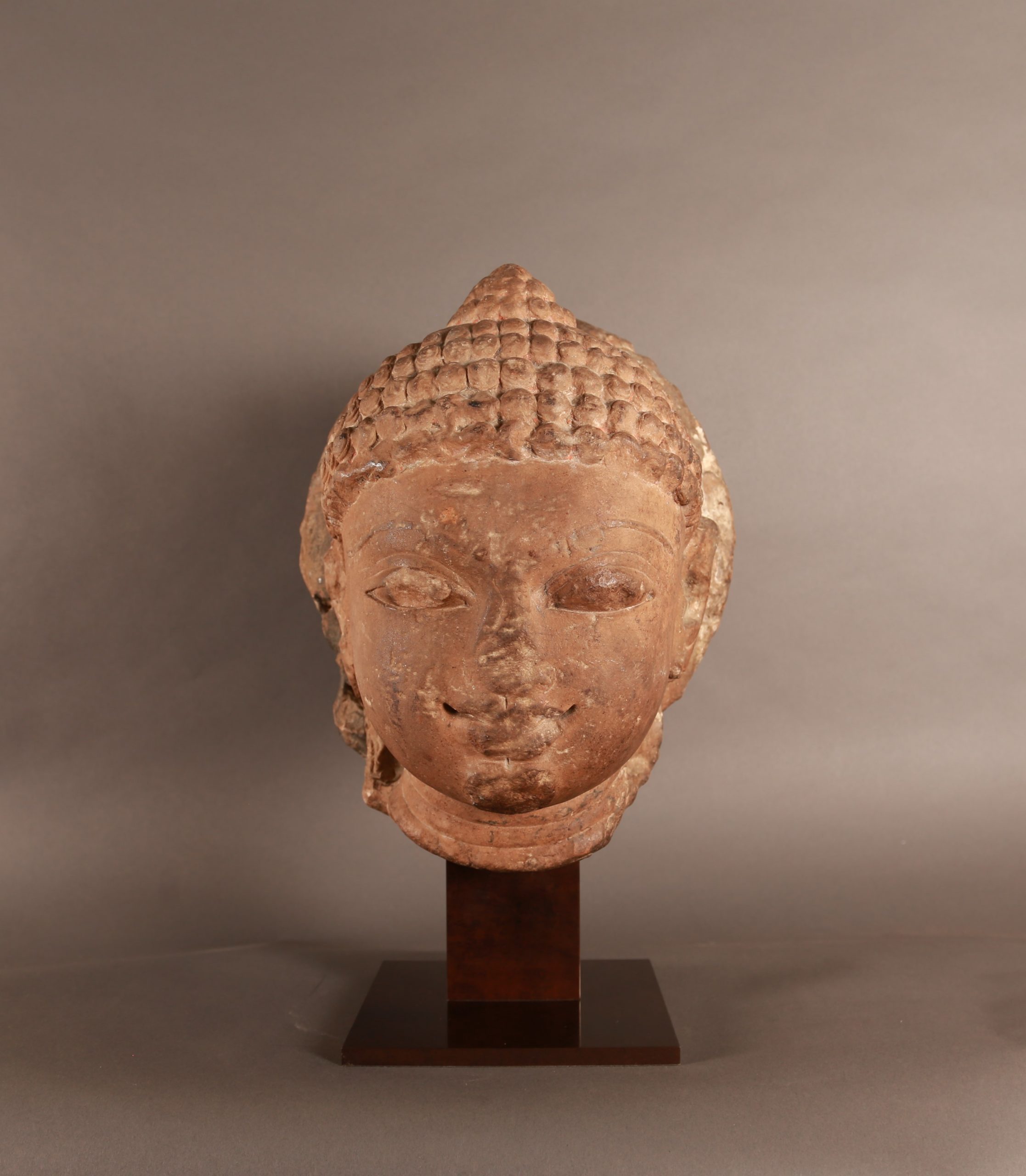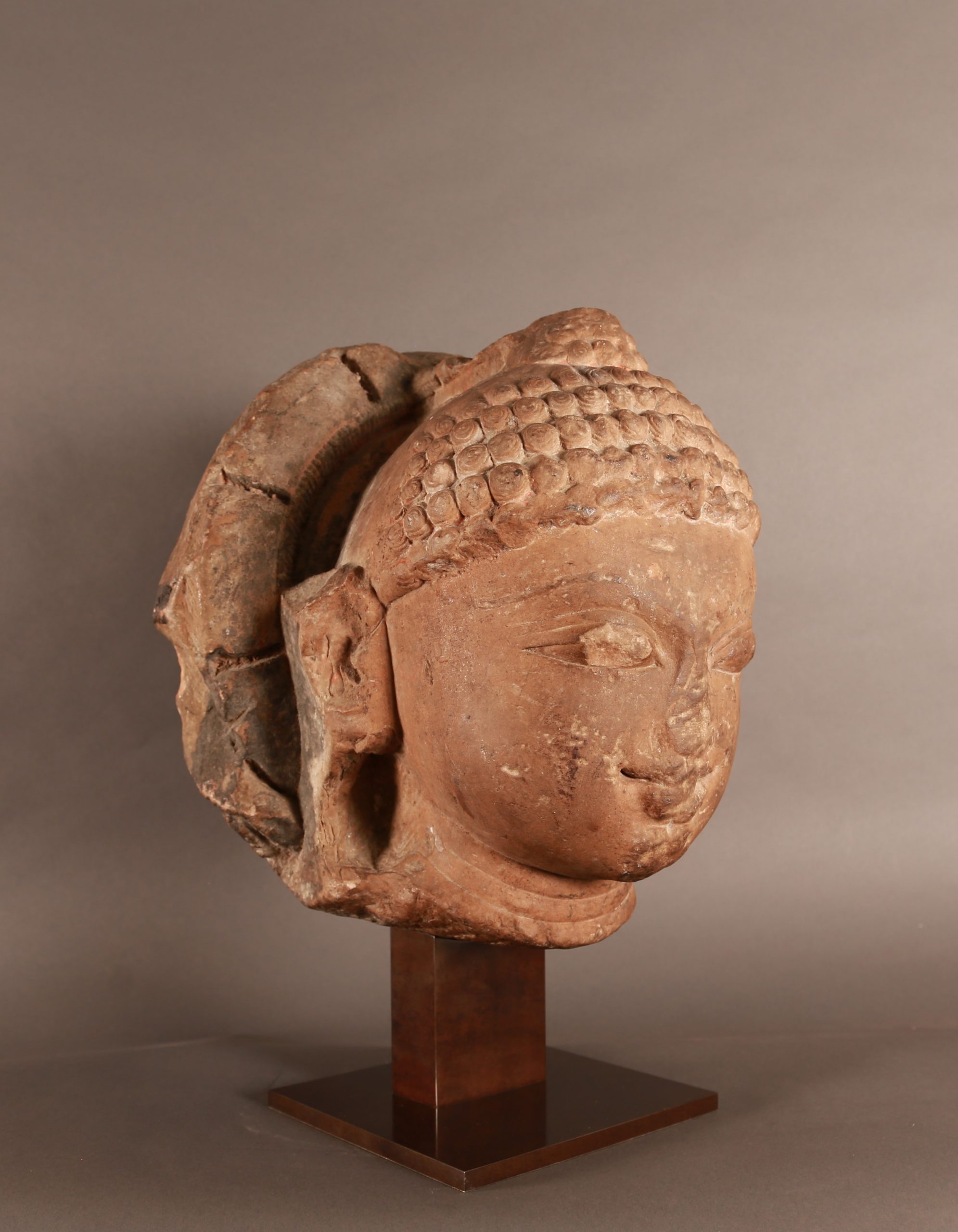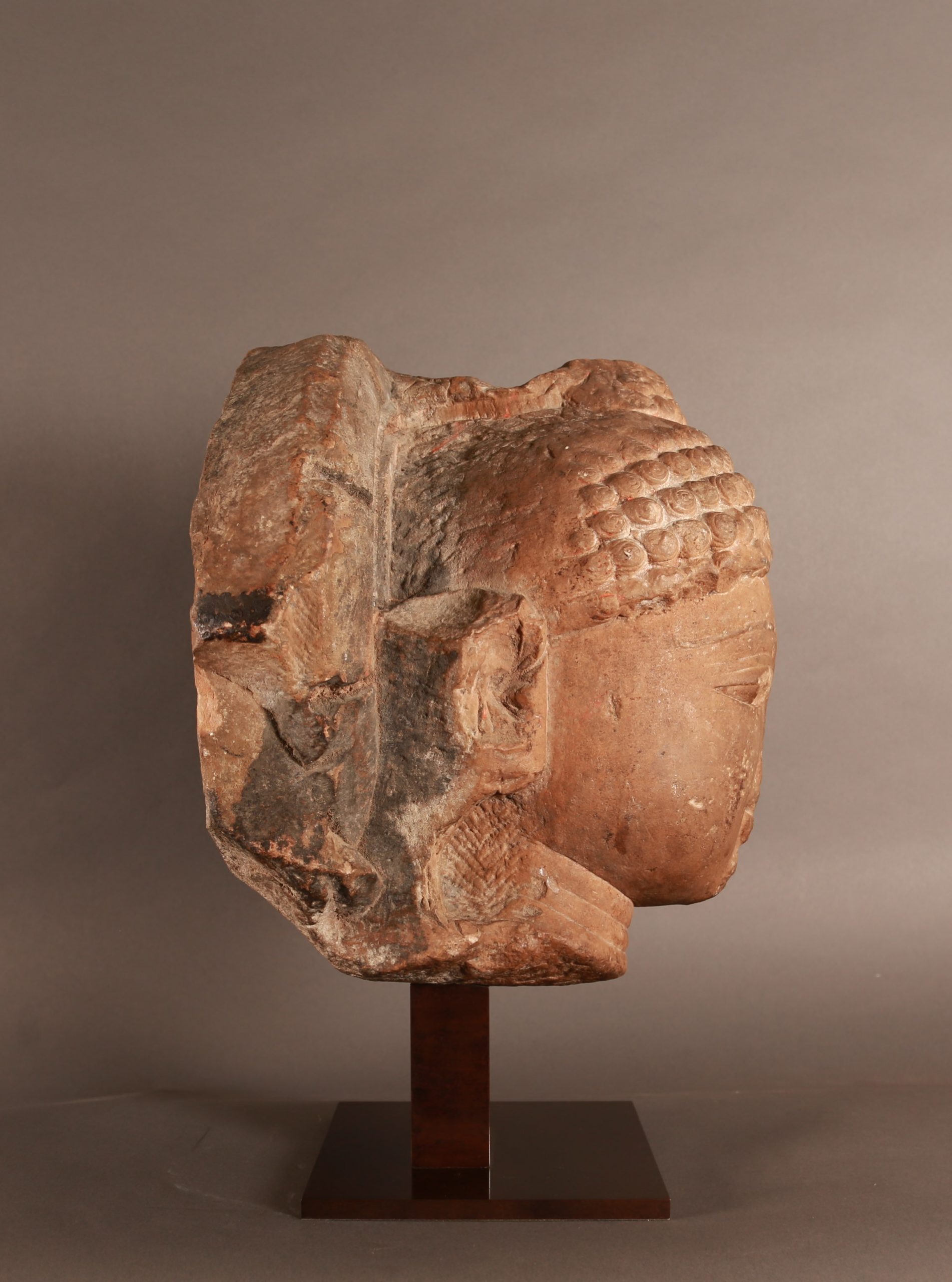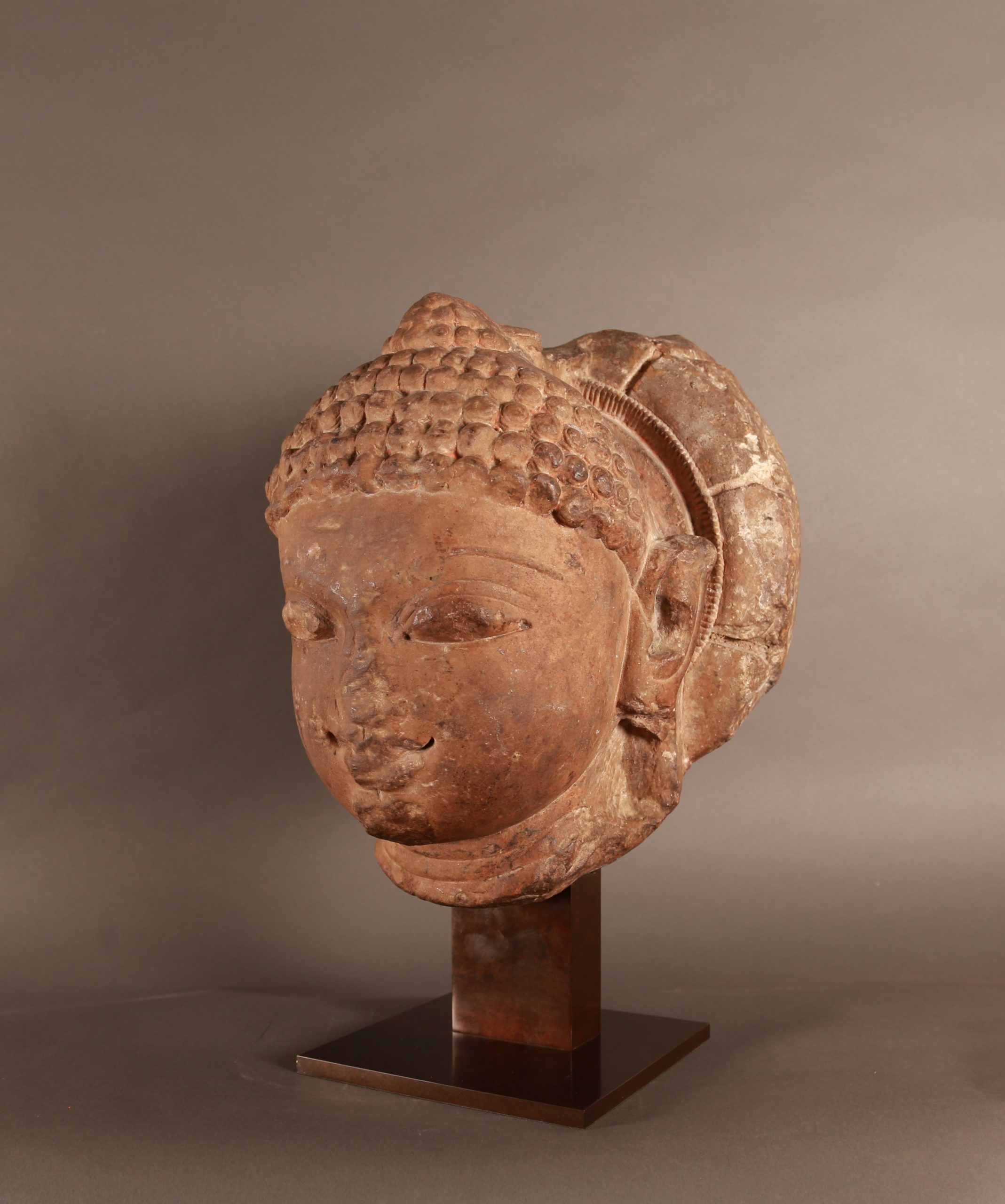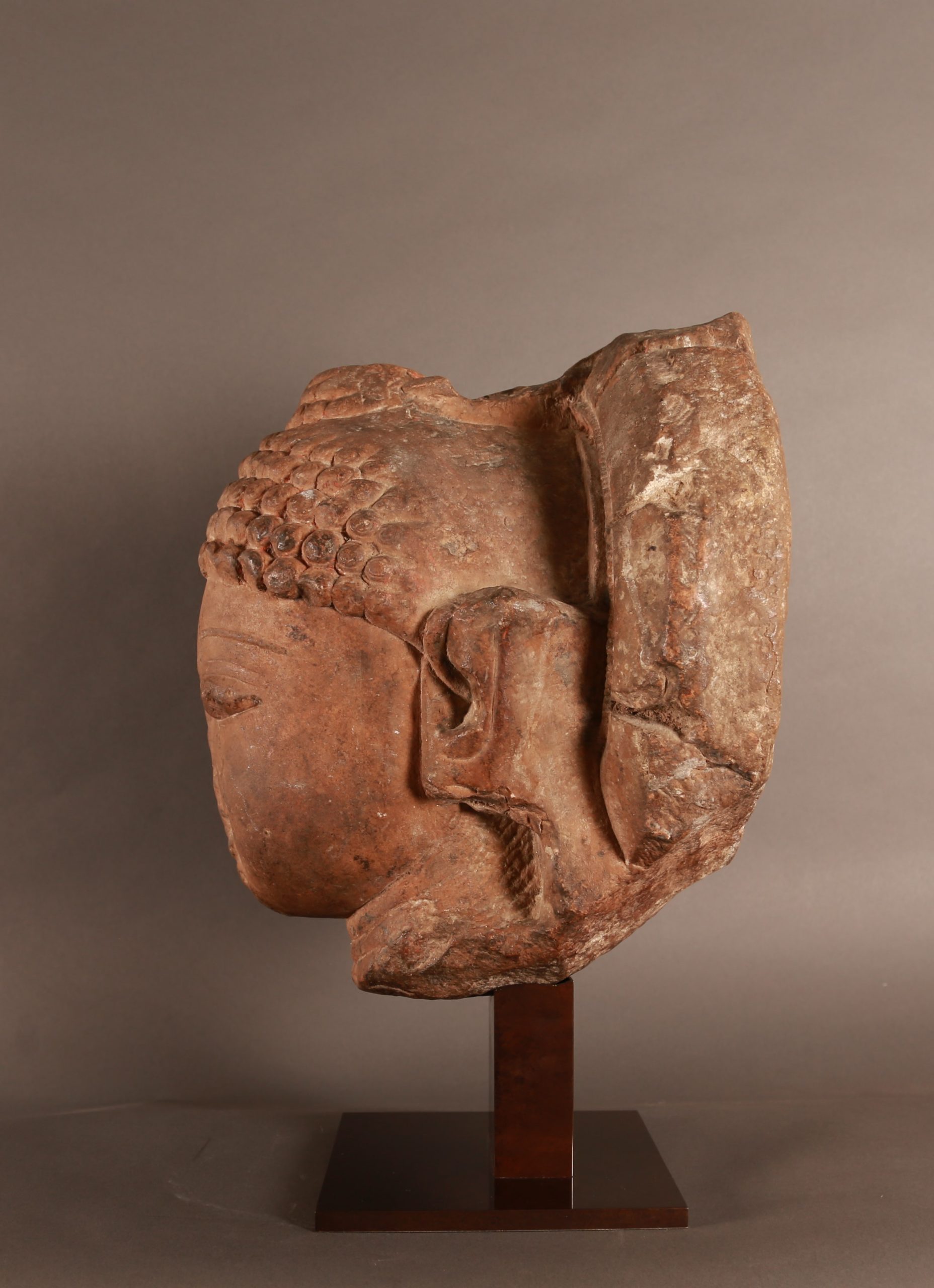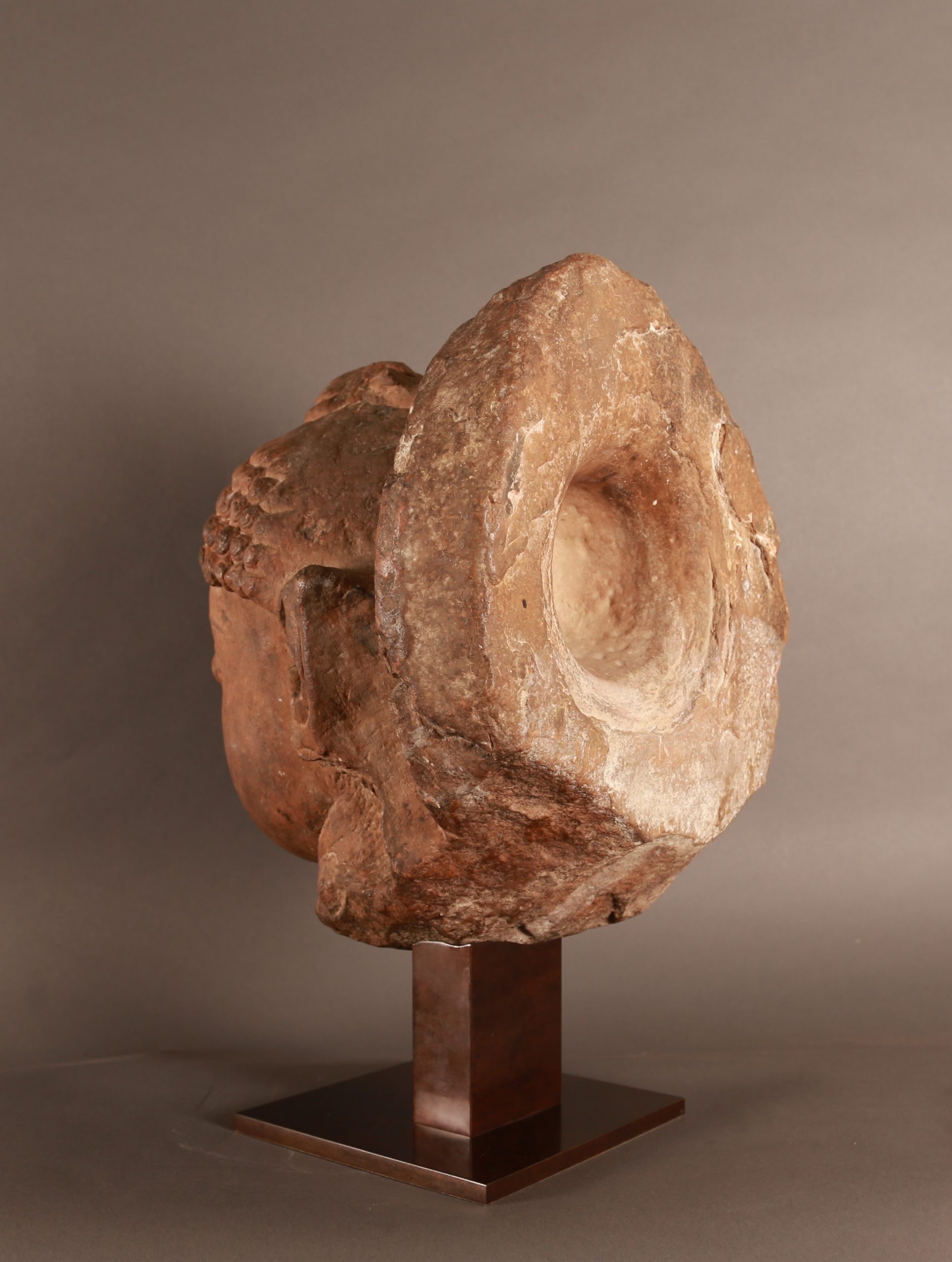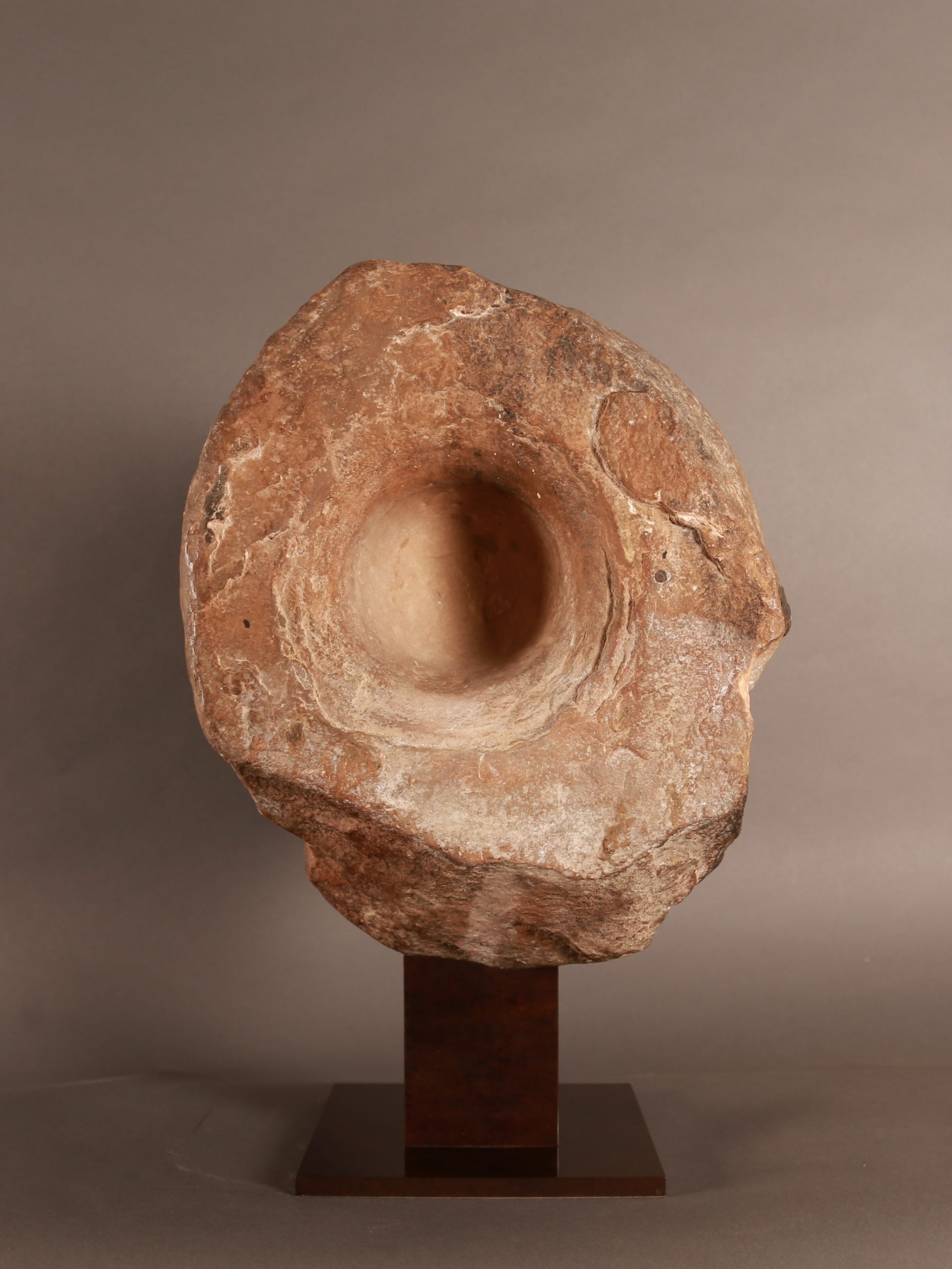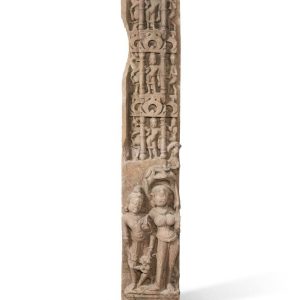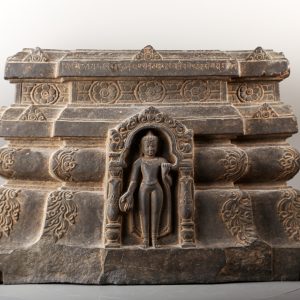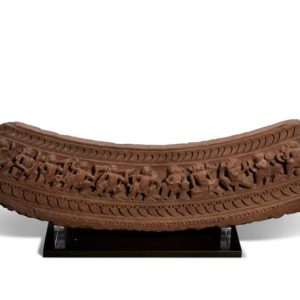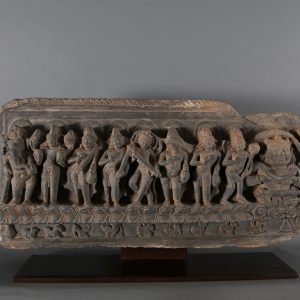Monumental head of Jina
38 000,00€
Description
Jainism, an Indian religion predating Buddhism
Jain sanctuaries have countless depictions of the Tirthaṅkara, also called Jina, omniscient beings who have broken free from the cycle of reincarnation. These extraordinary characters, of which there are twenty-four, existed down through the ages and are responsible for transmitting the foundations of Jain doctrine through the centuries. This doctrine predates Buddhism and one of its fundamental principles is non-violence (ahiṃsā), which applies to all creatures.
This superb head could represent Mahāvīra (the “great hero”) because its halo is a blooming lotus flower that was originally part of the throne upon which the deity seated. The figure shows a skillful blend of expressive vigor and delicacy.
The Jina’s moral virtue
The “Conqueror” or “Victor” (jina) was surely figured naked, as tradition dictates, sitting in the lotus position, hands in the lap, with a halo and protected by two parasols on top of each other. At the age of thirty, the prince Vardhamāna became a sādhanā (ascetic), gave up after a few months all clothing judging that detachment from the world required the nudity, practiced by the community Digambarā and some Sādhu, he devoted himself for twelve and a half years to meditation and long periods of fasting. He then reached enlightenment (mokṣa), which marks the end of the infernal cycle of reincarnations synonymous with pain. Through this face with a fixed expression, the sculptors depict the humility, righteousness and all the moral virtue of the holy man.
The influence of Gupta style
The artwork is characteristic of the medieval period in Uttar Pradesh or Madhya Pradesh, northern India, and its subtle decorative refinement is quite remarkable. Following the canon of Gupta art, Jain statuary oscillates between profusion of decoration and austere idealization of portraits. The roundness of the facial features still echoes the great classical aesthetics of the Gupta empire. It was at this same period, moreover, and by borrowing from Buddhist iconography the distinctive marks of holiness such as the cranial protuberance symbolizing the intelligence of the holy man, that the Jain canon was established.
Provenance : This piece comes from a French private collection, acquired from the famous Parisian gallerist Moreau-Gobard in the early 1970s (by repute), who had purchased the artwork from an important French private collection.

